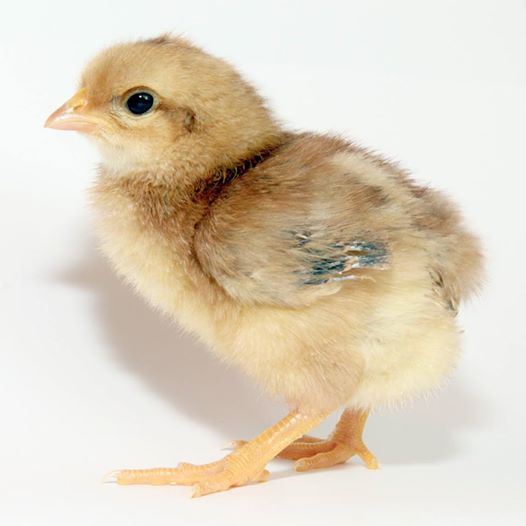
Incubator 1.0
I used my Arduino Ethernet with a BMP085 sensor and a humidity sensor to create an incubator for breeding out chicken eggs:
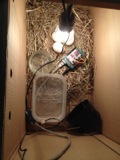
I've used the following parts:
- At the top, hanging over the eggs a simple 40W bulb. The heat it generates is arround 38° C.
- In the middle I've put a water bowl to keep a high relative humidity.
- At the bottom right a slowly running 12V fan. I've used a step-down converter (bottom left) which outputs 6V.
The Arduino has a running HTTP server which output the sensor values as JSON string. They are being read by another Linux server which generates nice graphs using the RRD tool.
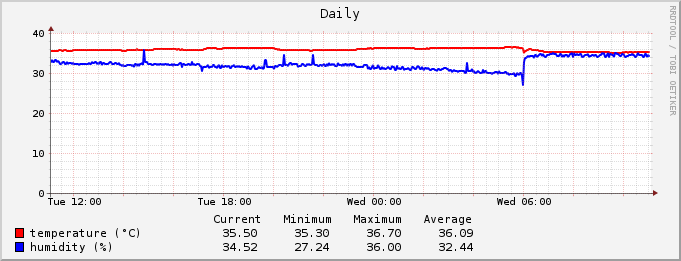
On the here shown graph you can see that the water in the bowl evaporated slowly. At 6 o'clock I've filled it up, so the relative humidity increased.
Let's notice that the chicken in the only egg (out of three) that started to developp normally did not hatch. I suppose due to non optimal conditions (too many times opening the incubator to turn the eggs, not enough humidity, ...)
Incubator 2.0
While waiting for the little chicken in Incubator 1.0 to hatch, I worked on a second, yet more sophisticated version. This one conains:
- an Arduino Ethernet,
- two 40W spots, each one having it's dedicated relay allowing the Arduino to switch them on and off,
- two 12V fans slowed down by a LM2596 step-down converter, mounted each one over a bulb,
- two bowls of water placed right under each bulb,
- a DS1621 temperature sensor connected to the I2C bus,
- a HIH-4030 humidity sensor,
- and a HD44780 LCD indicating the realtime values.
The entire box looks like this:
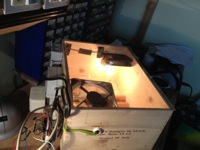
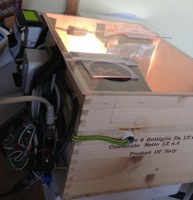
I monitored the system using a Raspberry Pi and the RRD tool:
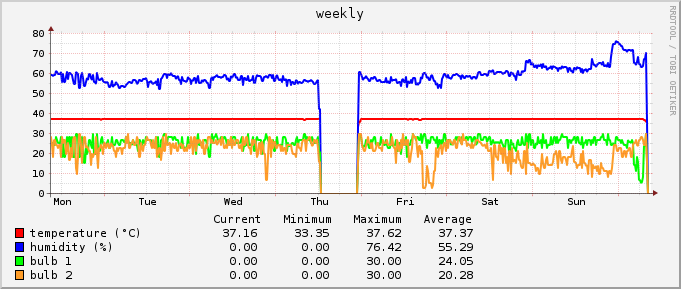
During the first test run the incubator contained five eggs:
- Has not been fertilized,
- did not start correctely,
- started hatching but didn't succeed to break out due to not high enough humidity,
- hatched on juin 9th :-)
- was underdevelopped and did not hatch.
Technically seen I had, during the 21 days the incubator was running, two broken lamps and the Arduino hang once. Let's notice that during the hatch process it is really important to raise the humidity over 75% in order to prevent the not fully hatched chickens to dry out before breaking out of the egg. I moved the water bowls closer to the heat lamps, added two more water dishes and put a big wet sponge inside the incubator.
And here it is. It's name is "Achtchen" (EN: "Number eight") because it's the 8th egg that succeeded in a living little chicken.
